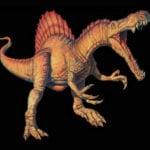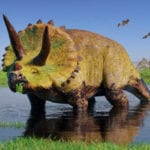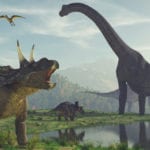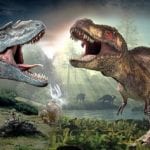 Mysteries
Mysteries  Mysteries
Mysteries  Creepy
Creepy 10 Scary Tales from the Middle Ages That’ll Keep You up at Night
 Humans
Humans 10 One-of-a-kind People the World Said Goodbye to in July 2024
 Movies and TV
Movies and TV 10 Holiday Movies Released at Odd Times of the Year
 Politics
Politics 10 Countries Where Religion and Politics Are Inseparable
 Weird Stuff
Weird Stuff 10 Freaky Times When Famous Body Parts Were Stolen
 Miscellaneous
Miscellaneous 10 Interesting Things Manufacturers Stopped Making and Why
 Gaming
Gaming 10 Funny Tutorials in Games
 History
History 10 Fascinating Little-Known Events in Mexican History
 Facts
Facts 10 Things You May Not Know about the Statue of Liberty
 Mysteries
Mysteries 10 Devastating Missing Child Cases That Remain Unsolved
 Creepy
Creepy 10 Scary Tales from the Middle Ages That’ll Keep You up at Night
 Humans
Humans 10 One-of-a-kind People the World Said Goodbye to in July 2024
Who's Behind Listverse?

Jamie Frater
Head Editor
Jamie founded Listverse due to an insatiable desire to share fascinating, obscure, and bizarre facts. He has been a guest speaker on numerous national radio and television stations and is a five time published author.
More About Us Movies and TV
Movies and TV 10 Holiday Movies Released at Odd Times of the Year
 Politics
Politics 10 Countries Where Religion and Politics Are Inseparable
 Weird Stuff
Weird Stuff 10 Freaky Times When Famous Body Parts Were Stolen
 Miscellaneous
Miscellaneous 10 Interesting Things Manufacturers Stopped Making and Why
 Gaming
Gaming 10 Funny Tutorials in Games
 History
History 10 Fascinating Little-Known Events in Mexican History
 Facts
Facts 10 Things You May Not Know about the Statue of Liberty
10 Spectacular Horned Dinosaurs
This year has been quite productive for dinosaur hunters, and probably the most spectacular fossils found recently belong to the group of ceratopsians, the horned dinosaurs. Triceratops is, of course, the most famous example, but there were plenty of other genera, some of them as spectacular as their popular relative, and often much more bizarre-looking.
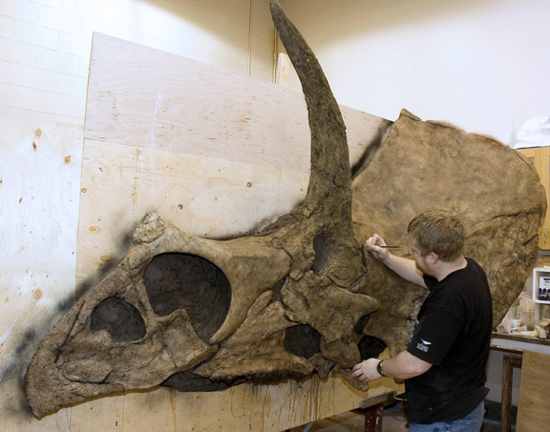
Eotriceratops was named in 2007; its name means “early Triceratops”, because it looked quite like Triceratops but lived a couple million years earlier. Since Triceratops is so famous, Eotriceratops’ appearance (spikey frill, two long horns over the eyes and one short horn in the snout) may seem very familiar, but there is something that makes this animal special and deserving of a spot in this list; its size. It was the largest ceratopsian, according to paleontologists, with a skull that measured three meters long and was as heavy as a car! The entire animal was probably 9-10 meters long and weighed more than a Tyrannosaurus rex. It is possible that Eotriceratops was the ancestor of Triceratops (which was, until Eotriceratops’ discovery, considered the largest horned dinosaur). It lived in Canada 68 million years ago.
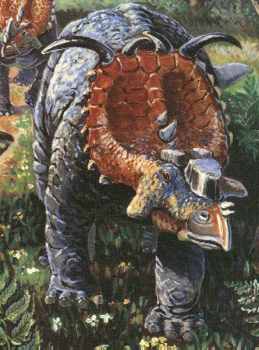
Its name means “thick nosed reptile”, because, instead of having horns as many other ceratopsians did, this creature had strange bony growths which may have been used in head butting duels. They also had spikes and horns in the edges of the frill, and a strange, unicorn-like horn just behind the eyes. The size and shape of these ornaments was different for every individual, so perhaps they helped the Pachyrhinosaurus to recognize each other. Many specimens have been discovered, and adults and juveniles are often found together, which suggests these dinosaurs care for their young. This was a pretty big animal, growing up to 8 meters long and weighing four tons- about as large as a modern elephant.
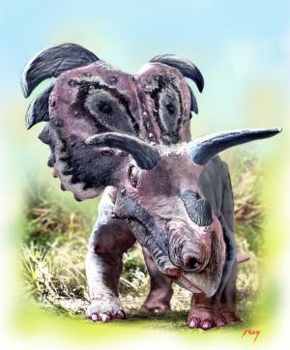
This ceratopsian had strangely curved horns on its frill. It was about seven meters long and was, at first, mistaken for another kind of dinosaur, Albertaceratops, so it was not named until 2010. Medusaceratops means “Medusa horned face”, because the hooked horns would resemble the snake-hairdo of the terrible Medusa from Greek myth. As for the creatures specific name, “lokii”, it honors the Norse god of mischief, Loki. Why? It seems that the paleontologist who named it is a big fan of Marvel comics, which depict Loki as a villain wearing a horned helmet (although in my opinion, Medusaceratops looks way cooler). Medusaceratops’ remains were found in Montana; it lived 77 million years ago.
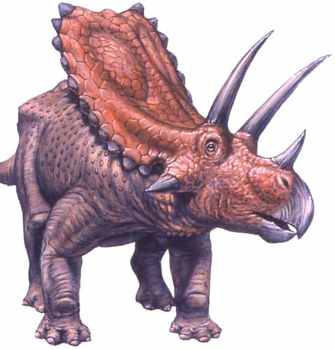
Pentaceratops is often said to have the largest skull of any land animal (although both Torosaurus and Eotriceratops may rival it). Its name means “five-horned face”. This may be misleading, since two of its horns are actually epijugal bones (the spike-like projections under the eyes) which most ceratopsians had, but were particularly large in Pentaceratops. Another interesting trait of Pentaceratops is the frill, which is slightly heart-shaped and more vertical than that of other ceratopsians. The frill had two holes or “fenestrae” which were covered in skin when the animal was alive. Paleontologists believe that this skin was brightly colored and was used to frighten predators and challenge its same-species rivals. It is even possible that they could change the color and patterns of the skin, although this is a mere speculation. Pentaceratops remains have been found in New Mexico; it was a very large beast, at 8 meters long and weighing up to 5.5 tons.

Although this is one of the “classic” dinosaurs and has been known since 1913, Styracosaurus has retained its place as one of the most spectacular ceratopsians. It had one long and dangerous horn on its snout, and six other horns protruding from the frill (hence its name, which means “spiked reptile”). This dinosaur was so frightening-looking that most predators probably avoided a direct confrontation with a fully grown adult. Styracosaurus remains have been found in Canada. It was about 5.5 meters long and weighed about 3 tons.
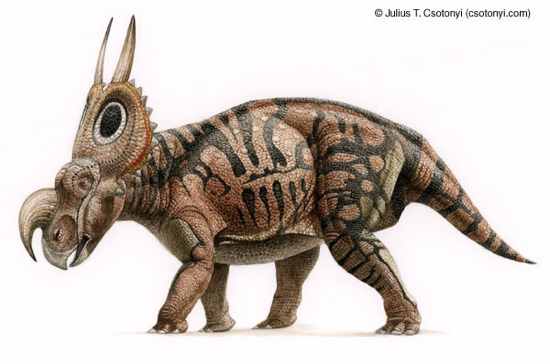
Einiosaurus was discovered in 1985, and named in 1995. Its name means “bison lizard”. Although closely related to Styracosaurus, it had a very different appearance; it had only two long, straight horns on its frill, and a strange, flattened, forward-curving nasal horn that resembled a bottle opener. Although the nasal horn was probably not a very effective weapon, the straight horns in the frill probably protected the animal from the bites of large carnivorous dinosaurs, preventing them from biting the neck of the back of the frill. Like Pachyrhinosaurus, Einiosaurus is known to have lived in large herds. Its remains have been found in Montana.
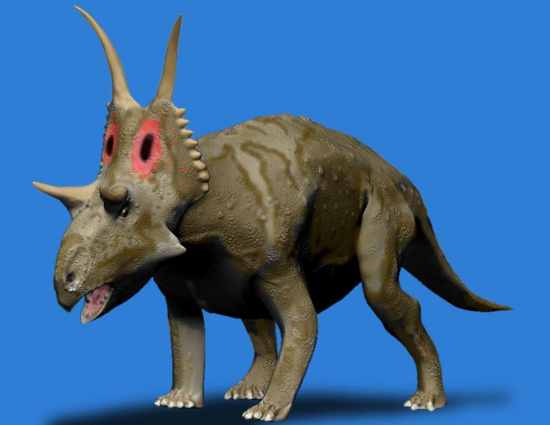
Diabloceratops means “devil horned face”. Its spectacular remains were found in Utah. It had a very small nasal horn, but its brow horns were quite large, and the ones in top of the frill were even larger. These four horns, along with the forward-curving frill, gave this animal a strange appearance, different from all other horned dinosaurs known. Diabloceratops seems to be a primitive horned dinosaur, since it shares some anatomical traits with the protoceratopsids, a closely related but less advanced family. Its jaws were massive, which suggests that its bite was very powerful. The same is true for most other ceratopsians and it is possible that many species used their huge beaks as much as their horns, as weapons against predators.
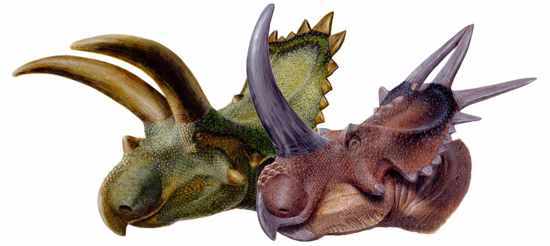
Rubeosaurus was formerly thought to be a Styracosaurus species. This dinosaur’s frill horns were much smaller than Styracosaurus’, but its nasal horn was enormous, and obviously a formidable defensive weapon. Unlike the horn of a rhinoceros, which is made entirely of keratin (the same protein hair and nails are made of), Rubeosaurus, and most other ceratopsians, had horns composed of a bony core covered on a sheath of keratin. Keratin usually does not fossilize, so the horns of ceratopsians were longer and sharper in life than they look in museums and photos of the fossils. Unfortunately, without the keratin sheath, it is impossible to know exactly how long the horns were. Another particular trait of Rubeosaurus is the straight horns on top of the frill, which coverage so that the tips almost touch each other.
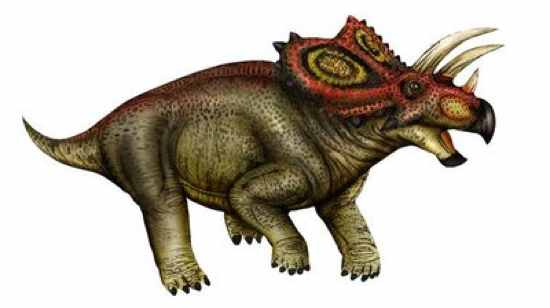
Coahuilaceratops magnacuerna was closely related to Pentaceratops, and was discovered in the northern Mexican state of Coahuila. It had a small nasal horn, but its brow horns were huge, the largest of any known dinosaur, measuring perhaps one meter and a half (again, it is impossible to know without the keratin sheath), hence the creature’s specific name (magnacuerna means “large horned”). Although the press initially claimed that Coahuilaceratops weighed 12 tons (twice as much as your average T-Rex!), it was actually around 5 tons, the size of an elephant, and measured about 7 meters long. It was described in 2010, being one of the latest additions to the ceratopsian bestiary, and certainly one of the most spectacular of all dinosaurs.
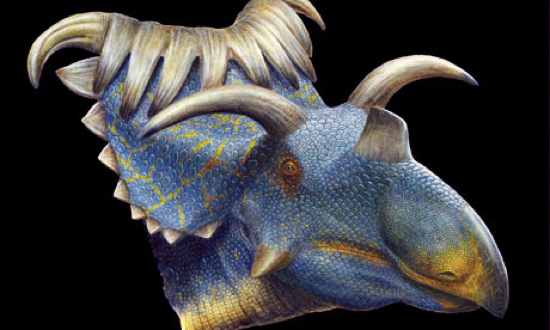
One of the latest dinosaur discoveries is also deserving of the first place in this list; Kosmoceratops had not less than thirteen horns! (Fifteen if you count the epijugal bones). It has been called by scientists “the most ornate of all dinosaurs” and “one of the most amazing animals known”. Its name means “ornate horned face”. This is perhaps the best proof that dinosaurs took theatricality quite seriously; the forward facing horns in the frill and down-facing, curved horns on its brows were not practical for either attack of defense, and were more likely an exhibition to frighten rivals and predators and to attract potential mates. Kosmoceratops lived in western North America; its remains have been found in Utah.

